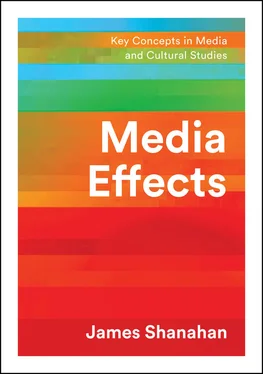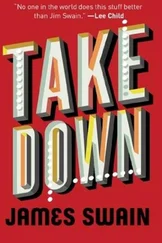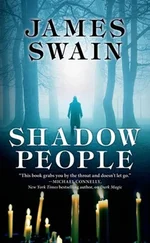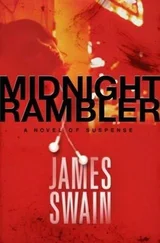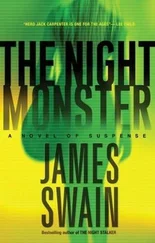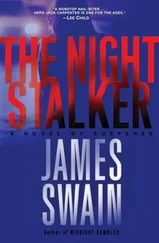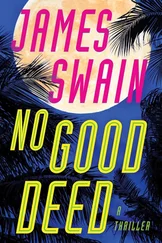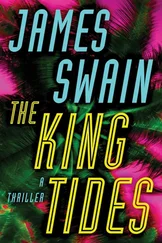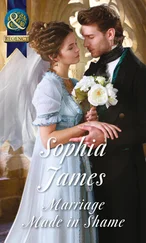The idea that a media effect could be conceptualized as a maintenance of the status quo becomes important a little later in our story. Still, the perceptual dichotomy that opposes critical to effects research has been durable. They may differ on an informational/ideological axis, but both are concerned with effects. A question that we will pose throughout this volume is whether there is a synthesis that can bring together this dichotomy, to the extent that it is false and not a useful way to continue proceeding. 4
The critical/hegemonic view implies a very strong view of media effects. Its early versions were a piece of what social scientists were arguing against when they created the straw-man idea of the “hypodermic needle” or “magic bullet” theory. Perhaps what was happening was something that we have seen later in media effects work, where the most fearful hypotheses about media’s very strong effects are formulated early in the experience with a new medium. The Frankfurt School’s work was powerful, but over-argued, and it became evident that their explanations, along with those of the ones who had panicked about propaganda, were not sufficient to explain the wide variety of media phenomena that were seen, as well as the wide variety of people’s reactions to them.
Moving through the 1960s and 1970s, critical work began to recognize that media did not automatically and always enforce the views of privileged classes. Stuart Hall’s idea that media messages could be encoded and decoded in different ways (“dominant,” “negotiated,” “oppositional”) moved critical theorists to lessen their overall view of media power. While still holding to the idea of media as important cultural organs in service of the state, there appeared more room for “readings” of media. In these works, culture becomes something more than the product of an artistic or literary elite; it is equated with the daily lived experience of a people. With this change, popular media take on a more important role: not just as bread and circus for the masses, but as vehicles through which cultural experiences can be both generated and consumed.
It is to Hall that we owe some of the most relevant criticism of the “behavioral” effects perspective. Hall was writing from a standpoint that was dissatisfied with empirical approaches such as content analysis, or the isolation of specific items of discourse as the meaningful causes of effects in the empirical studies. His most famous essay (Hall, 1973) sought to emphasize that isolating or counting instances of violence, let alone trying to establish whether exposure to them had any effect, was an ill-advised venture:
If we refuse, for a moment, to bracket and isolate the issue of violence, or the violent episode from its matrix in the complex codes governing the genre, how many other, crucial kinds of meaning were in fact transmitted whilst researchers were busy counting the bodies? This is not to say that violence was not an element in the TV western, nor to suggest that there were not quite complex codes regulating the ways in which violence could be signified. It is to insist that what audiences were receiving was not “violence” but messages about violence. (Hall, 1973, pp. 8–9)
Hall’s research was an important starting point for a cultural studies tradition that has been strongly concerned with not just how elite cultural producers attempt to get across messages – and do they? – but how audiences themselves see them, use them, and ultimately whether these uses make any difference (which is also a kind of “effect”).
Other concerns and outlooks
As the years passed, media and cultural studies also began a move toward focusing on media’s role in relation to race, class, gender, and other issues of social difference. The whole issue of media and identity is somewhat beyond the scope of this book, as it has become a voluminous discourse with an attendantly huge literature. Some of these issues had been dealt with in the effects tradition (studies of the demography of television for instance), but not with the foreground attention that came to dominate critical work. In these studies, media are most often seen as vehicles for constructing views of marginalized classes of people that serve the interests of a more dominant group (Gross, 1991, provides a summary of this type of outlook in relation to sexual minorities). While the presumed power of media is still strong, these studies also include ways to look at how marginalized groups negotiate identity within a power-defined media system.
While the critical/ideological perspective has often couched itself as opposed to strong views of effects, those working from the “political economy” perspective were most direct in arguing that media exerted a propagandistic effect on audiences. Herman and Chomsky’s “propaganda” model (1988) of media argues that media are directly controlled by economic elites, and that their messages serve these elites equally directly. It’s an ironic return to the propaganda concern that started effects research in the first place. Other writers in the tradition (e.g., Smythe, 1981) were effective in noting how modern media structures could essentially commodify the time of workers, turning all human experience into an activity determined by and relevant to a capitalist mode of production (see also Jhally & Livant, 1986).
Down the line from these concerns, critical approaches exploded in multiple directions and variants. Critical theory and media studies, in their own way, followed a similar trajectory to the communication effects research tradition. An initial statement implied very strong media effects, motivated by social conditions and the experience of the time. However, a simplistic view proves to be unsuitable to explain all phenomena, and theoretical specifications occur that moderate the view of media power. In the case of critical theory, postmodern theory and cultural relativisms became much more influential, leading to a situation in which almost any statement of theory could be critiqued from a relatively radical position. A dominant metaphor was offered which viewed media as a key player in the “social construction” of reality. But the postmodern moment led to many different offshoots, some with stronger views of media effect than others.
In sum thus far, we have two traditions ( informational and ideological ) that have provided the frameworks for thousands of investigations into the simple question of whether the media have any meaningful effect. Communication theory, perhaps even more than other forms of social inquiry, is notable for the large number of theoretical explanations that have been put forward. This is especially true in media effects theory; along with the various theoretical accounts, there are differing views on how those theories should be grouped with each other. As we delve into these explanations in more detail, we will be looking for newer ways to reframe and synthesize the old debates, contrasting and comparing informational and ideological accounts with a perspective that puts narrative more toward the front.
In the rest of the book, we’ll pursue the following outline. Chapter 2will put forth the differences that will be involved in what I term the “narrative” perspective. The roots of media effects theory in persuasion will be examined, along with the intellectual and scholarly background that can help us move forward. In chapter 3we will take up the question of the impact of mediated violence, which became the archetypical issue around which media effects debates revolved. In addition to the many studies focusing on the imitative aspects of media violence, we look at a prominent research approach that brought in a narrative perspective. In chapter 4we look at the role of media and social representation. The question of how media highlights majorities and deselects minorities in its presentation is an interesting way to examine the socially constructive power of media narratives. In chapter 5, we look at whether media play a role in social control. The chapter hearkens back to old ideas about propaganda, but with newer angles and some fresher results. Chapter 6examines what is happening with media effects theory in the new media environment. We look at whether traditional theories can explain media that have moved on from their legacy formats, or whether something additional is needed. Finally, in chapter 7, we have an epilogue that brings us back full circle to the question of whether narrative adds something new to the media effects picture, and takes on the question of media effects, big or small.
Читать дальше
